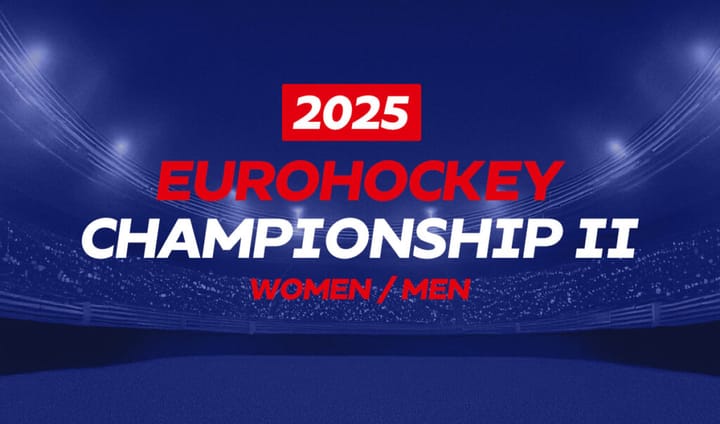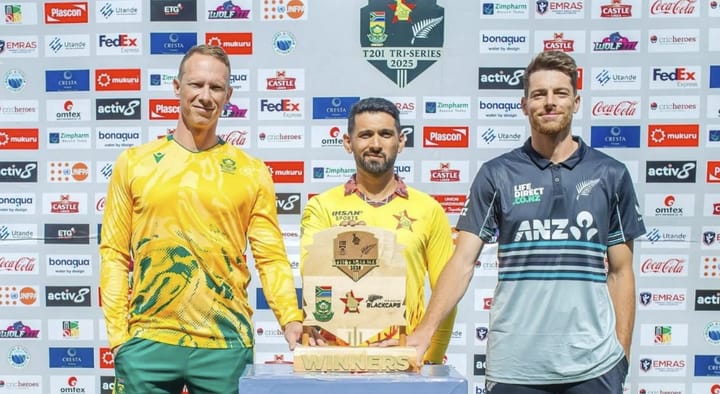Tech in the Game: How FIFA Is Using AI, VAR and Wearables to Shape the Future
Football's future is here! ⚽️ FIFA is leveraging AI, advanced VAR, and wearables like never before. From lightning-fast offside calls to smart scouting and player welfare, technology is revolutionizing the game. Get ready for FIFA World Cup 2026 – smarter, faster, fairer!

The roar of the crowd, the thud of the ball, the tension of a penalty shootout – these are the timeless elements that define football. But beneath the surface, a quiet revolution is underway. The beautiful game, once reliant solely on human judgment and raw athletic prowess, is increasingly embracing the cutting edge of technology. From split-second offside calls to intricate player performance data, FIFA is leveraging innovations like AI, advanced VAR systems, and wearables to sculpt the future of the sport, especially as we look ahead to events like the FIFA World Cup 2026 hosted by the USA, Canada, and Mexico.
Semi-Automated Offside: The Quest for Precision
Few moments in football generate more debate than a tight offside call. For years, these decisions relied on the subjective eye of an assistant referee, often leading to frustration and controversy. Enter semi-automated offside technology (SAOT) – a game-changer first introduced at the FIFA World Cup 2022 in Qatar, and prominently featured at the recent FIFA Club World Cup 2025.
How does it work? A sophisticated system of 12 dedicated tracking cameras, mounted beneath the stadium roof, tracks the ball and up to 29 data points on each individual player's body, 50 times per second. This includes limbs relevant for offside calls. Crucially, the official FIFA World Cup 2022 match ball, Al Rihla (and subsequent iterations), contains an inertial measurement unit (IMU) sensor that sends ball data 500 times per second, precisely detecting the kick point.
By combining this limb and ball-tracking data with artificial intelligence, the system provides an automated offside alert to the video match officials in the video operation room within seconds. While still "semi-automated" (meaning officials validate the decision), it drastically reduces the time taken for reviews – from an average of 70 seconds with traditional VAR to often just 10-15 seconds. This not only speeds up the game but also provides transparent 3D animations, shown both to broadcasters and on stadium screens, allowing fans to understand the decision immediately. It's a testament to FIFA's commitment to accuracy and efficiency in officiating.
The Invisible Edge: Player Tracking & Workload Monitoring
Beyond the whistle, technology is transforming how teams train, prepare, and prevent injuries. Wearable tracking devices, often integrated into vests or worn on specific body parts, have become standard equipment for elite clubs. Companies like Catapult Sports and Kinexon Sports are at the forefront of this revolution, alongside other innovators like PlayerData.
These GPS-based and inertial sensor systems collect a treasure trove of data: distance covered, sprint speed, acceleration, deceleration, heart rate, fatigue levels, and even specific movement patterns. This data is gold for sports scientists and coaches. It allows them to:
- Monitor workload: Ensuring players aren't overtrained, reducing the risk of injuries.
- Optimize performance: Tailoring training regimens to individual needs and positions.
- Inform tactical decisions: Understanding physical outputs during matches to make smarter substitutions or plan recovery.
- Aid rehabilitation: Tracking recovery progress for injured players to ensure a safe return to play.
The FIFA Innovation Programme actively supports research into these areas, aiming to enhance player welfare and longevity, pushing the boundaries of what was once only possible through subjective observation.
Transparency on the Field: Referee Body Cameras
Imagine seeing a game from the referee's perspective – the quick reads, the close-up action, the pressure of a packed stadium. This is becoming a reality, with referee body cameras being piloted at various FIFA events. The FIFA Club World Cup 2025 saw these cameras in use, with footage even integrated into live broadcasts by DAZN, the tournament's exclusive global broadcaster. As reported by outlets like Al Jazeera and The Times of India, these small cameras, often integrated discreetly, capture the live action unfolding directly in front of the officials.
The primary goals of these trials are to:
- Enhance fan experience: Providing a unique, immersive viewing angle for those at home.
- Increase transparency: Offering insights into the referee's immediate view of an incident. It's crucial to note that current broadcast policy for these trials generally excludes controversial moments, penalty appeals, or disputed calls, focusing instead on unique angles of goals, saves, and general play. The aim, as stated by Pierluigi Collina, chairman of the FIFA Referees Committee, is to "do things step by step."
- Aid referee development: The footage can be used by FIFA internally to analyze decision-making, improve training, and eventually create guidelines for broader implementation, including potentially for controversial moments in the future.
While still in early stages and requiring careful consideration regarding privacy and impact on the flow of the game, body cameras represent a significant step towards greater accountability and understanding of officiating in football.
What’s Next: AI, Analytics, and the Future Ecosystem
The current technological advancements are just the tip of the iceberg. FIFA is actively exploring deeper integrations of Artificial Intelligence (AI) and advanced analytics to further revolutionize football.
Expect FFA’s partnerships with AI analytics firms to expand significantly in areas such as:
- Enhanced Scouting and Talent Identification: AI can analyze vast datasets of player performance, video footage (via computer vision), and biometric data to identify hidden gems, predict player potential, and match players to specific team philosophies with unprecedented accuracy. AI systems can break down complex actions like off-ball movement, progressive passes, and defensive pressures that are hard for the human eye to track consistently. This could democratize scouting, giving clubs with fewer resources access to sophisticated talent identification.
- Advanced Match Prediction and Strategy Optimization: AI models can process historical match data, player statistics, team form, and even environmental factors to predict match outcomes with greater accuracy. For coaches, AI can simulate match scenarios, suggest optimal formations (as demonstrated by tools like Google DeepMind's TacticAI for set pieces), and recommend in-game adjustments based on opponent weaknesses in real-time.
- Fan Engagement: Beyond AR overlays, AI can personalize fan experiences, deliver tailored content (e.g., customized highlights and news feeds), and even power interactive fantasy leagues and gaming experiences, making consumption more engaging.
- Injury Prevention and Player Health: AI can analyze workload, movement patterns, muscle stress, and even sleep and nutrition data to predict injury risks and recommend preventive measures, moving from reactive treatment to proactive prevention. Clubs like Real Madrid are already utilizing AI for this purpose, aiming to reduce time lost to preventable injuries.
FIFA has openly stated its intent to invest in digital technology and Artificial Intelligence for the next generations, recognizing that the future of football lies in embracing these innovations.
A Personal Journey and India's Leap
For me, growing up watching football in the 90s, the idea of a referee getting instant feedback from multiple camera angles, or coaches tracking a player's exact fatigue levels mid-game, felt like science fiction. My own journey as a football fan has paralleled the rise of technology – from relying on newspaper reports for match details to streaming live games on mobile, complete with instant stats and heatmaps. The evolution has been astounding, transforming how we consume and understand the sport.
For India, a nation with a burgeoning football fanbase and a strong emphasis on technological adoption, these advancements hold immense significance. While top-tier Indian clubs and the national team are already utilizing some basic performance tracking, the broader integration of AI for scouting and player development could be transformative. Indian platforms like "StepOut," for instance, are already developing AI-powered performance analysis, indicating local expertise. Access to affordable VAR 'light' solutions, which FIFA is actively certifying and promoting, is particularly promising for domestic leagues like the Indian Super League (ISL). AIFF President Kalyan Chaubey has confirmed plans to implement VAR Lite in Indian football from the upcoming season, aiming to reduce human errors and provide crucial support to referees.
As FIFA continues to push the boundaries of innovation, making technologies more accessible and impactful, the game we love will undoubtedly become even more dynamic, fair, and captivating for fans and players worldwide, including in India.
Thank you for reading! If you’re passionate about sports and want timely updates, subscribe to our newsletter to never miss a story.
Disclaimer: We strive to publish verified and up-to-date information from official sources. If you spot any inaccuracies or would like to suggest corrections, please reach out to us directly [contact@chalokhelte.com]. We value and appreciate community feedback.


